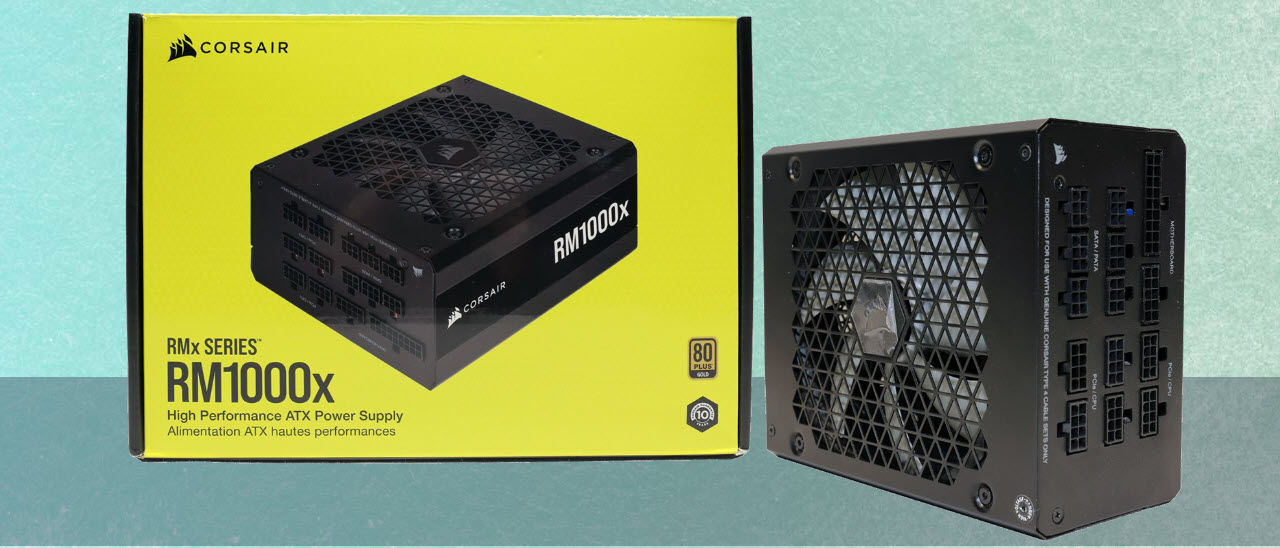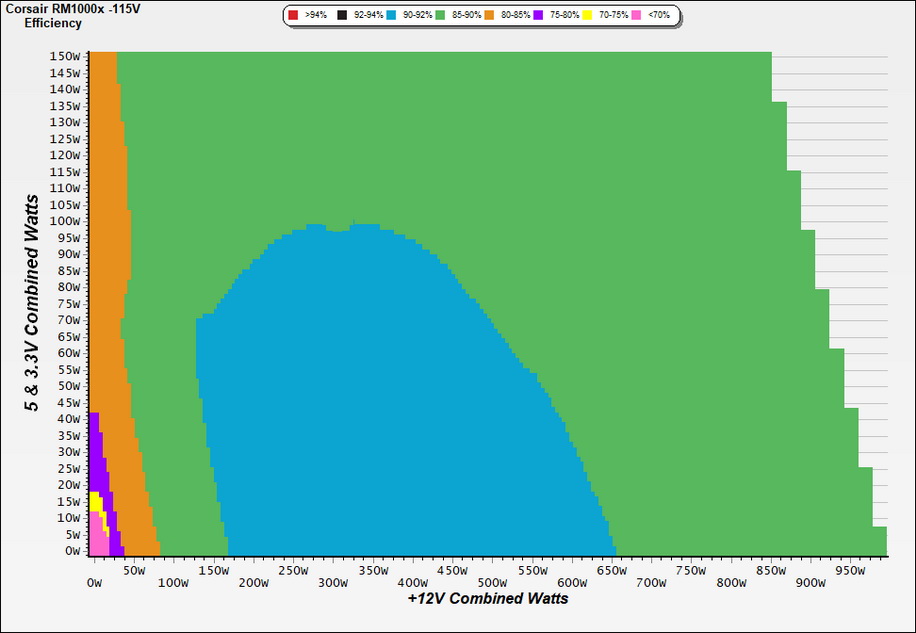Why you can trust Tom's Hardware
Protection Features
Check out our PSUs 101 article to learn more about PSU protection features.
Protection Features | Row 0 - Cell 1 |
OCP (Cold @ 25°C) | 12V: 105A (126.05%), 11.980V |
OCP (Hot @ 38°C) | 12V: 105.2A (126.29%), 11.975V |
OPP (Cold @ 26°C) | 1262.25W (126.22%) |
OPP (Hot @ 43°C) | 1266.25W (126.63%) |
OTP | ✓ (127°C @ secondary side) |
SCP | 12V to Earth: ✓ 5V to Earth: ✓ 3.3V to Earth: ✓ 5VSB to Earth: ✓ -12V to Earth: ✓ |
PWR_OK | Proper operation |
NLO | ✓ |
SIP | Surge: MOV |
OCP at 12V and OPP are correctly set. On the other hand, the OCP triggering points are sky-high on the minor rails. They don't create any voltage regulation or ripple issues, but there is no need for such high amperage on these rails, which can wear off fast the DC-DC converters, under high operating temperatures.
All other essential protection features are present and operate as they should.
DC Power Sequencing
According to Intel’s most recent Power Supply Design Guide (revision 1.4), the +12V and 5V outputs must be equal to or greater than the 3.3V rail at all times. Unfortunately, Intel doesn't mention why it is so important to always keep the 3.3V rail's voltage lower than the levels of the other two outputs.
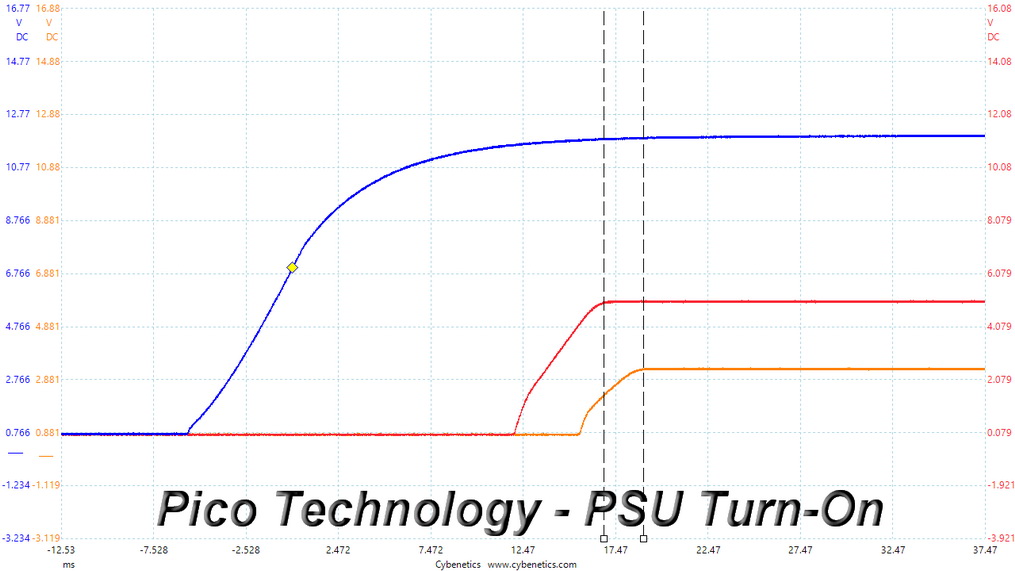
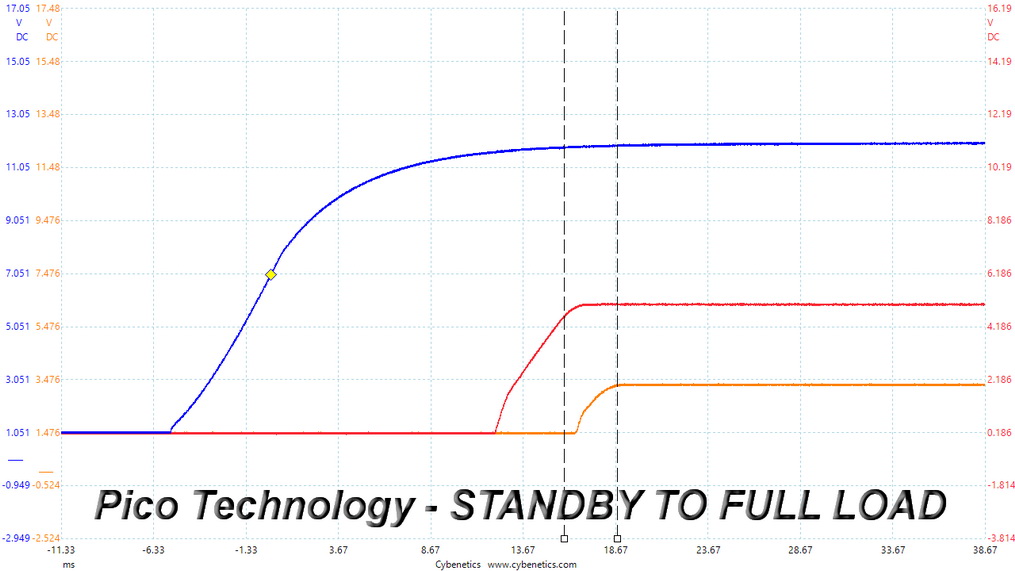
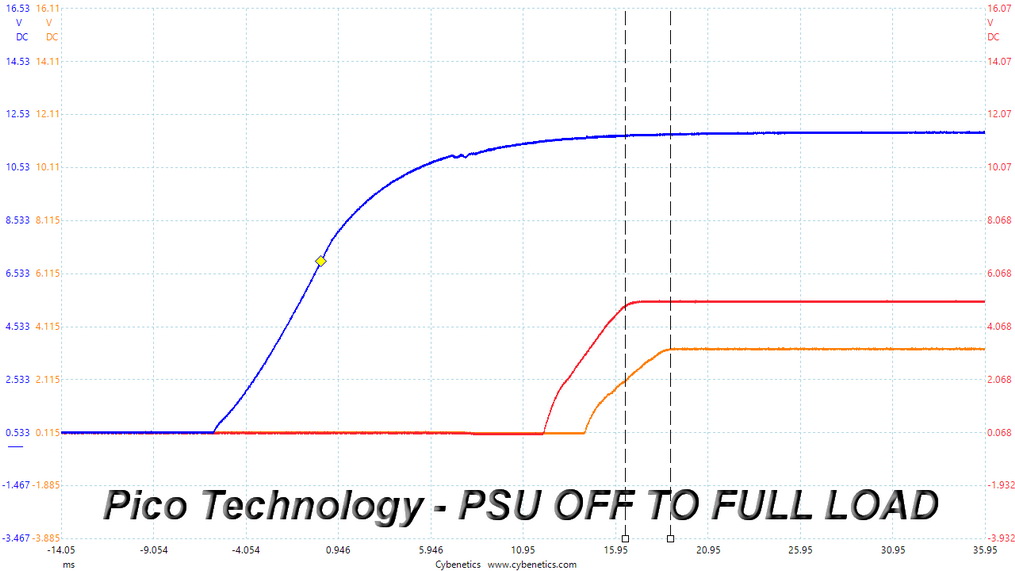
The 3.3V rail is always lower than the other two, so there is no problem here.
Cross Load Tests
To generate the following charts, we set our loaders to auto mode through custom-made software before trying more than 25,000 possible load combinations with the +12V, 5V, and 3.3V rails. The deviations in each of the charts below are calculated by taking the nominal values of the rails (12V, 5V, and 3.3V) as point zero. The ambient temperature during testing was between 30 to 32 degrees Celsius (86 to 89.6 degrees Fahrenheit).
Load Regulation Charts
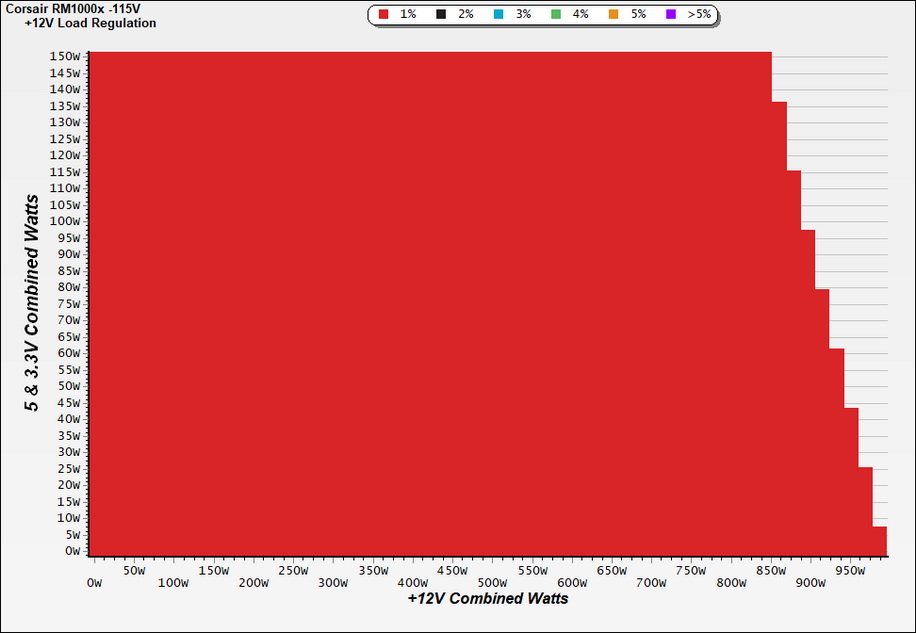
Load Regulation Graphs
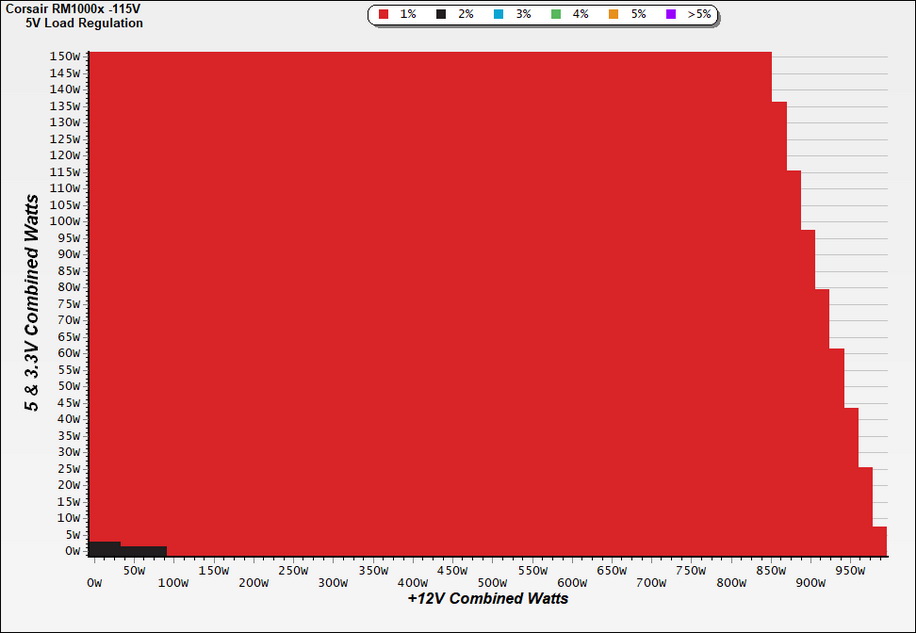
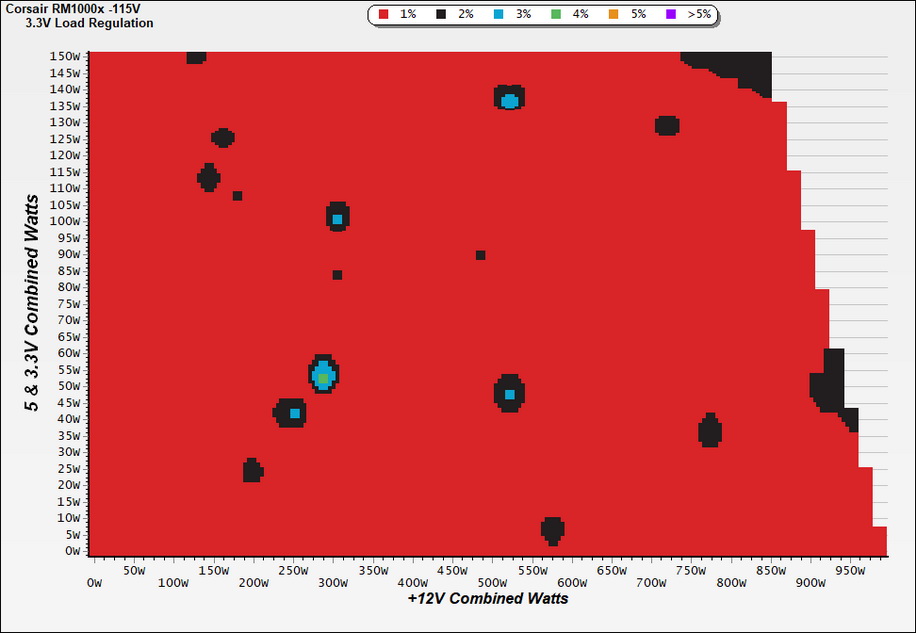
Efficiency Graph
Ripple Graphs
The lower the power supply's ripple, the more stable the system will be and less stress will also be applied to its components.
Get Tom's Hardware's best news and in-depth reviews, straight to your inbox.
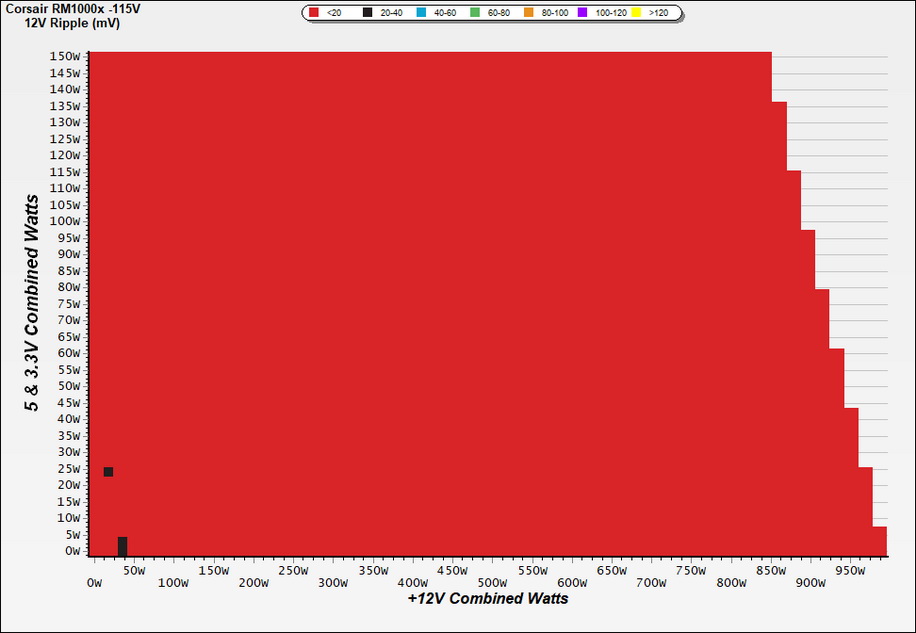
Ripple Suppression Graphs
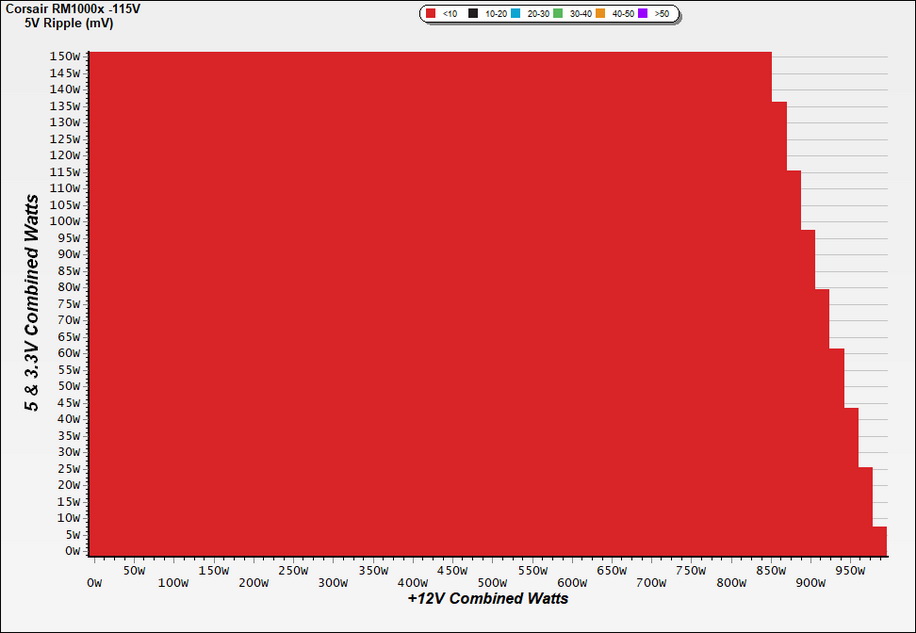
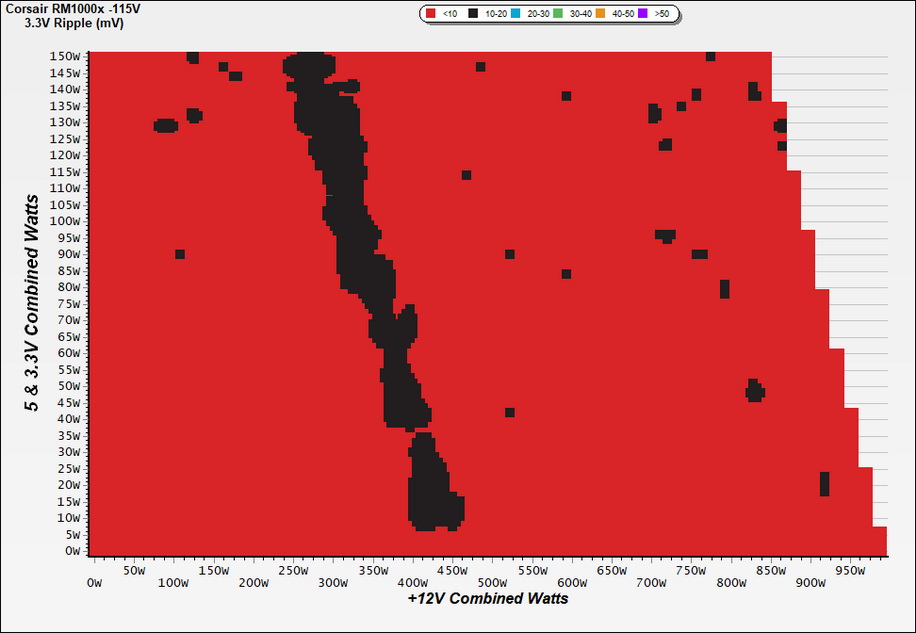

Infrared Images
We apply a half-load for 10 minutes with the PSU's top cover and cooling fan removed before taking photos with a modified FLIR E4 camera able to deliver an IR resolution of 320x240 (76,800 pixels).
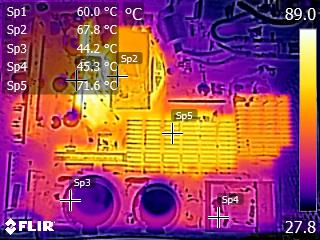
IR Images
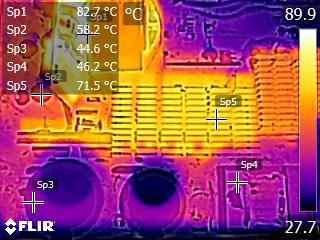

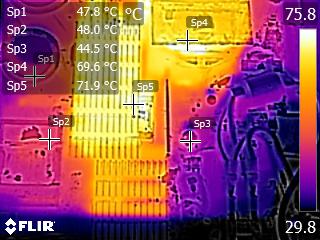
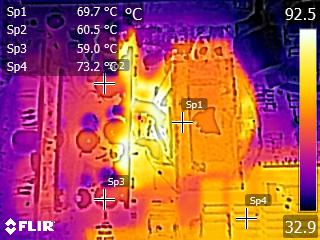
The hottest part is the 12V board, which is connected to the main transformer through a pair of thick wires.
MORE: Best Power Supplies
MORE: How We Test Power Supplies
MORE: All Power Supply Content
Current page: Protection Features, DC Power Sequencing, Cross-Load Tests and Infrared Images
Prev Page Load Regulation, Hold-Up Time, Inrush & Leakage Current, Efficiency and Noise Next Page Transient Response Tests, Timing Tests, Ripple Measurements and EMC Pre-Compliance Testing
Aris Mpitziopoulos is a contributing editor at Tom's Hardware, covering PSUs.
-
werther595 I see in this article that you compare specs with the Superflower Leadex V Pro 1000W. Will there be a review of that unit coming out? Or is there one that I have missed?Reply
